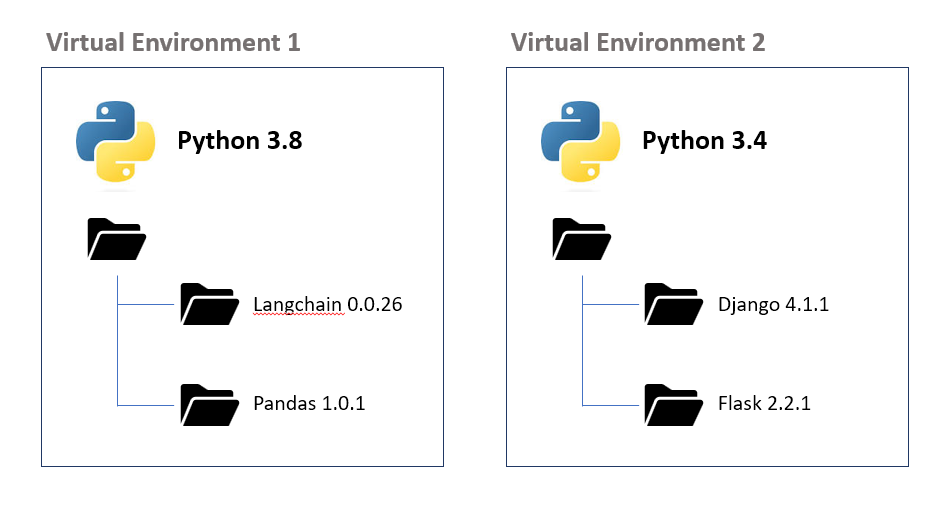
Understanding Virtual Environments in Python
A virtual environment in Python is an isolated environment where you can install dependencies specific to a project. This prevents conflicts between different projects that may require different versions of the same package.
Why Use a Virtual Environment?
- Isolation: Each project has its own dependencies, avoiding conflicts between projects. This is crucial when working on multiple projects that may require different versions of the same library.
- Dependency Management: You can install only the packages required for a project, ensuring a cleaner and more manageable development environment.
- Reproducibility: Other developers can replicate the exact environment using a
requirements.txtfile, making collaboration smoother and avoiding issues due to different library versions. - System Integrity: Installing packages globally can lead to conflicts with system-wide dependencies. Virtual environments help prevent unintended modifications to the system Python installation.
- Ease of Deployment: By using virtual environments, deployment processes become more predictable and can be easily transferred to production environments.
Creating a Virtual Environment
To create a virtual environment in Python, use the following command:
python -m venv myenvThis creates a folder myenv containing a separate Python interpreter and package directory.
Activating the Virtual Environment
Once created, activate the environment:
- On Windows:
- On macOS/Linux:
myenv\Scripts\activatesource myenv/bin/activateInstalling Packages
After activation, you can install packages using pip:
pip install requestsTo save the installed packages, run:
pip freeze > requirements.txtDeactivating the Virtual Environment
To deactivate the virtual environment, use:
deactivateSimilar Concepts in Programming
Many programming environments use similar isolation techniques to manage dependencies. The concept of a virtual environment in Python is comparable to other dependency management and isolation mechanisms in different ecosystems.
Comparison with Containerization in Docker
Docker provides an even deeper level of isolation by packaging an entire application along with its dependencies and runtime environment. While virtual environments isolate Python dependencies, Docker containers isolate the entire system environment, including operating system dependencies, system libraries, and runtime configurations.
For example, in Docker, instead of using a virtual environment, you would define dependencies in a Dockerfile and use a container to run the application:
# Example Dockerfile for a Python application
FROM python:3.9
WORKDIR /app
COPY requirements.txt .
RUN pip install -r requirements.txt
COPY . .
CMD ["python", "app.py"]While virtual environments help manage dependencies within a Python project, Docker ensures the application runs consistently across different environments, making it more suitable for deployment and scalability.
Comparison with Node.js and npm
In Node.js, package management is handled using npm and the package.json file. The idea of dependency isolation is similar to virtual environments in Python, where dependencies are installed locally within the project directory.
To initialize a Node.js project, run:
npm init -yTo install dependencies, use:
npm install expressThis stores dependencies in the node_modules folder and updates package.json and package-lock.json.